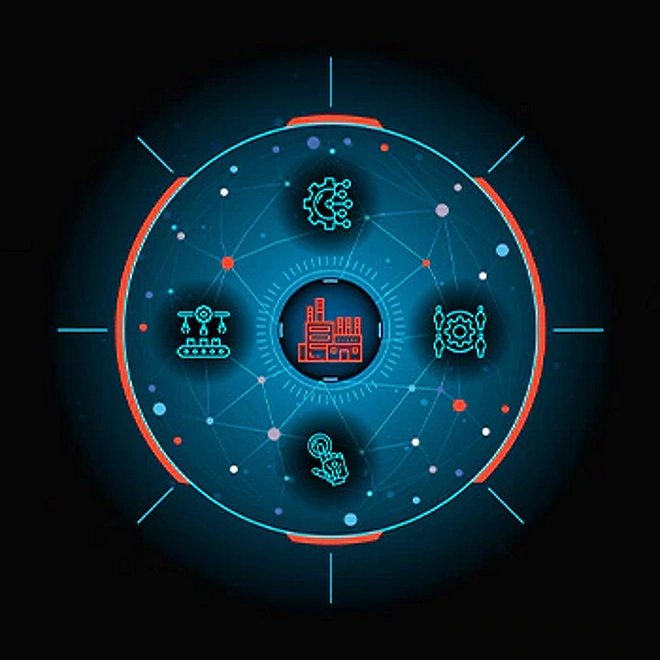Sustainable construction
Designing and building a greener future
The pursuit of net-zero emissions is placing a lot of pressure on engineering and construction companies to lower the carbon footprint of new and retrofit construction. But the amount of capital needed to meet that goal can be an added challenge. Explore strategies to help the industry increase sustainability in construction—while keeping costs under control.
Reducing carbon emissions in construction
The engineering and construction (E&C) industry is focusing on sustainable development, overall energy consumption, and greenhouse gas (GHG) emissions. Globally, the built environment accounts for 39% of gross annual carbon emissions. This includes operational carbon—the ongoing carbon emissions from day-to-day use—and embodied carbon—all the carbon emitted in producing, transporting, and disposing of construction materials.
E&C companies and suppliers are feeling the pressure to lower the carbon footprint of new and retrofit construction in their pursuit of net-zero emissions. According to a survey by Dodge Construction Network, more than 90% of US E&C companies receive requests from customers to lower the amount of embodied carbon used in construction projects. However, the capital expenditure required to realize this vision can be considerable.
A new look at sustainable buildings may help offset the needed investment, either as new construction or a retrofit of an existing building. The industry's trifecta of potential solutions—sustainable materials, sustainable methods, and sustainable models—can help drive sustainable buildings. This report provides some approaches and recommendations to help E&C companies lower the carbon footprint from buildings within the bounds of realistic capital expenditure.
Factoring sustainability into new projects
To reach net-zero emissions by 2050, some E&C, real estate, and building management services (BMS) companies have started integrating renewable energy and efficient construction into new builds. The 2021 World Green Building Trends report highlighted those commitments to boost green building efforts remain strong. For example, 34% percent of surveyed companies in the US were focused on green buildings, and 46% reported that they would do so in the next three years. The increasing global focus on climate change could incentivize construction companies to factor sustainability into their construction projects, processes, and designs.
A typical building constructed today could still be in use in 2070 and beyond, but the climate that it will encounter would have likely changed significantly. So, there’s a need to implement effective, low-carbon solutions to decarbonize buildings along their life cycle. Innovation, digital technologies, policy incentives, and supportive regulation are some factors driving the industry's progress toward net-zero emissions.
Sustainable materials, methods, and models
The route to reduced emissions requires architects, designers, builders, subcontractors, suppliers, technology service providers, and operating owners to come together in new ways to solve for sustainability. It will likely also involve developers accurately measuring all carbon sources to reduce, reuse, and recycle wherever possible, as well as considering many aspects of their business models.
Sustainable materials, methods, and models offer a route toward cutting embodied carbon and creating a zero-emissions construction industry. Sustainable materials require end-to-end strategic sourcing capabilities, including cost, quality, and supplier management. Sustainable methods require effective supplier collaboration and development programs to manage cost and risk. And sustainable models require oversight across procure-to-pay processes and a high focus on spending compliance.
But sustainable construction doesn’t necessarily have to be more expensive, especially when pricing strategies, program management, and environmental plans are incorporated from the beginning into the development process.
- Sustainable materials: Costs of sustainable or low-carbon construction materials will likely gradually decline compared to conventional materials due to lower ingredient costs of recycled or by-product materials. The higher upfront cost of sustainable buildings can be offset by a lower long-term life cycle cost.
- Sustainable methods: Prefabrication and modular construction, 3D-printing, advanced manufacturing, and material use optimization leveraging generative design can reduce the waste lifecycle of construction projects, thereby saving costs.
- Sustainable models: Low-carbon business models and strategies can speed up many phases of construction and lower the costs of projects. A connected construction ecosystem can help ensure that developers and operators have a continuous flow of data and information.
Scaling new technologies and solutions
So, what are some things the E&C industry can do to overcome current challenges and increase the successful implementation of sustainable buildings? Engineering and construction companies could consider four areas to scale new technologies and solutions needed to solve the challenges associated with reducing the adverse effects of climate change:
- Define a vision and develop a roadmap
- Drive and prioritize sustainability-targeted construction and retrofitting projects
- Use incentives to promote alternate materials
- Promote data-sharing standards
Achieving the vision for sustainable buildings and creating a zero-carbon built environment will likely require adopting transformational approaches, collaborating through global platforms, and working with governments for incentives that can take new solutions to a commercial scale.

